802.11n is a technology developed on 802.11g and 802.11a. The biggest feature is the rate increase, the theoretical rate up to 600Mbps (currently 300Mbps in the industry). 802.11n can work in both 2.4GHz and 5GHz frequency bands.
A wireless transmission standard protocol behind the 802.11a/b/g of the Wi-Fi Alliance, in order to achieve high-bandwidth, high-quality WLAN services, so that the wireless LAN achieves the Ethernet performance level, the 802.11 task group N (TGn) came into being . The 802.11n standard was officially approved by the IEEE in 2009. However, there are many vendors using MIMO OFDM technology, including Huawei, Tenda, TP-Link, D-Link, Airgo, UbiquiTI, Bermai, Broadcom, Agere Systems, and Atheros. Cisco, Intel and so on, the products include wireless network cards, wireless routers and so on.
802.11ac IntroductionIEEE 802.11ac, an 802.11 wireless local area network (WLAN) communication standard, communicates through the 5GHz band (which is also the reason for its name). In theory, it can provide up to 1 Gbps of bandwidth for multi-station WLAN communications, or a single connection with a minimum of 500 Mbps transmission bandwidth.
802.11ac is the successor to 802.11n. It employs and extends the air interface concept derived from 802.11n, including: wider RF bandwidth (up to 160MHz), more MIMO spatial streams (up to 8), multi-user MIMO, and higher-order modulation (up to 256QAM).
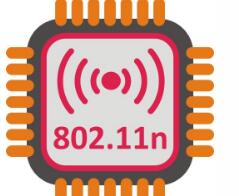
Compared with 802.11n, 802.11ac mainly has four major technology evolutions: wider bandwidth binding, more spatial streams, more advanced modulation technologies, and more flexible MIMO mechanisms.
One, channel binding
A simple and efficient way to increase the radio transmission speed is to give it more frequency or bandwidth. The 802.11a/b/g time channel only has 20MHz. In order to get more bandwidth, 802.11n introduces the technology of channel bonding, and will Two 20MHz channels are bundled together. Today, 802.11ac can support 80MHz channels, that is, four channels are bound, and can support up to eight channels, so that the entire channel can reach 160MHz. If the spectrum resources are compared to roads, the 802.11a/b/g era is like a single lane, with limited carrying capacity. By the 802.11n era, it has developed into a two-lane traffic, which has greatly increased traffic, while 802.11ac can reach 8 lanes. The ability can be imagined (as shown in Figure 1).

Figure 1 The theoretical bandwidth of 802.11ac is up to 160MHz
On the surface, channel bonding can bring about higher speeds, but in China, there is a practical problem that must be resolved - spectrum resources in the 5 GHz band are limited. In North America, the 2.4 GHz band has a bandwidth of 83.5 MHz (3 non-overlapping channels), while the 5 GHz band can carry 6 times the traffic of 2.4 GHz, and the 5 GHz band environment is relatively ideal. In China, the available resources in the 5GHz band before 2012 are only 100MHz (5725-5825MHz), which means that in the 802.11a standard, there is only one available channel (80MHz). If a cellular deployment is to be implemented, there are not enough channels available ( as shown in picture 2). With the official announcement of the Ministry of Industry and Information Technology on the 5GHz band at the end of 2012, the above problems have been alleviated. The Ministry of Industry and Information Technology has explicitly issued the use of the 5150-5350MHz band and is considering further opening up more spectrum resources. This means that under the 802.11ac standard, the existing spectrum resources can guarantee at least three non-interfering 80MHz channels are available. This initiative of the Ministry of Industry and Information Technology will greatly accelerate the commercial process of 802.11ac, and is also a sign of the country’s efforts to promote wireless. .
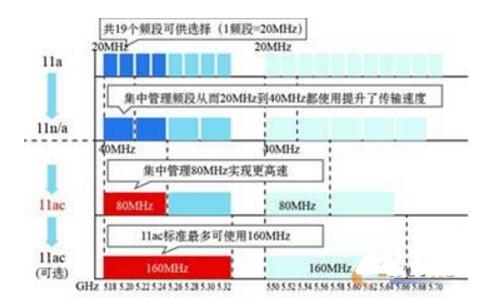
Figure 2 Channel division under different standards
Second, 8 data streams
802.11ac follows the 802.11n MIMO technology. With multiple antenna technologies, data throughput can be increased without consuming more bandwidth and without increasing transmission power consumption. This method spreads the energy over multiple antennas so that more data is transmitted per Hertz while the total energy consumption remains constant. At the same time, the multi-antenna design also increases reliability. Similarly, using roads as a metaphor, if channel bonding only increases the number of lanes on a given road, then MIMO technology will increase the number of roads. This will also greatly increase the capacity of roads to carry more traffic. (As shown in Figure 3).
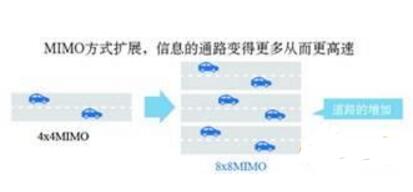
Fig. 3 The MIMO method of 802.11ac theory The highest 8 spatial streams
The 802.11n theory can support up to 4 data streams, while 802.11ac can support 8 data streams. In the commercial process of the 802.11n standard, it takes about two years for the chip manufacturer to increase the data flow. The commercial chip can only achieve the maximum of 3 data streams. Because of the cost and practical performance, the 4-way spatial stream Commercial chips have not been available yet, and it will be more difficult to implement 8-channel data streams. So far, commercial chips have been mainly based on 3-way spatial streams.
Third, 256QAM modulation technology
The 802.11ac technology is also implemented by physically increasing the signal carrying density. In the signal modulation layer, 802.11n uses 64QAM, while 802.11ac achieves 256QAM. The QAM transmit signal set is generally represented by a constellation diagram. Each constellation point corresponds to a signal. The more constellation points, the greater the amount of information transmitted. The common forms are 16QAM, 64QAM, and 256QAM. The 802.11ac protocol standard uses 256QAM. Therefore, the amount of data carried by a single carrier can reach 8 bits, while 802.11n can only reach 6 bits, so the throughput also increases (as shown in Figure 4).
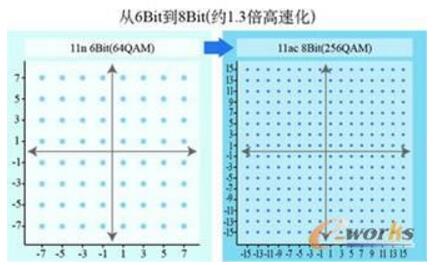
Figure 4 Constellation of 64QAM and 256QAM
Image point of view, in the 802.11n era, transportation on the road was a small car, and now the 802.11ac era has become a large truck, and the transportation capacity is naturally larger than before (as shown in Figure 5). However, although the new modulation scheme increases the number of bits carried by a single carrier and also relatively increases the complexity of the modulation, the signal stability and anti-jamming requirements are higher in practical applications, and better professional wireless planning and implementation are required. experience.

Figure 5 256QAM modulation technology to increase the amount of single-carrier data
Fourth, multi-user MIMO (MU-MIMO)
The 802.11ac technology evolution also has one of the most promising technologies, namely, multi-user MIMO (MU-MIMO). This is because it will increase the number of terminals for wireless access of a single AP and ease the historical difficulties of high-density deployment. . In 802.11n technology, MIMO only allows single-user use at the same time, while 802.11ac can support multi-user MIMO, which means that a single 802.11ac AP can transmit different data streams to two or more devices. We can imagine the situation when taking the expressway through the toll station. Regardless of whether the road is several lanes, if the number of checkpoints at the toll station is insufficient or inefficient, it will cause traffic jams; similarly, the technology introduced above only improves the carrying capacity of expressways. Quantity, then MU-MIMO will be the key technology to improve the efficiency of toll stations. Unfortunately, the current generation of 802.11ac chips do not support this feature. The second-generation chip will be launched at the end of 2014, and will only support MU-MIMO.
In general, 802.11ac will bring great innovations to the Wi-Fi market in the future. New technologies will bring new Wi-Fi experiences. 802.11a/b/g will become history, and 802.11n will gradually To become mediocre, 802.11ac will become the dominator of the WLAN market.
The difference between 02.11ac and 802.11nFrom the core technology point of view, 802.11ac is built on the 802.11a wireless Wi-Fi standard, including the 5GHz band that will use 802.11a. However, in the setting of the channel, 802.11ac will continue to use 802.11n MIMO (Multiple Input Multiple Output) technology, laying the foundation for its transmission rate of 1Gbps.
The operating frequency of each channel of 802.11ac will be increased from 802.11n's 40MHz to 80MHz or even 160MHz, plus about 10% of the actual frequency modulation efficiency, the final theoretical transmission speed will jump from the highest 600Mbps 802.11n to 1Gbps. Of course, the actual transmission rate may be between 300 Mbps and 400 Mbps, which is close to 3 times the actual 802.11n transmission rate (the actual transmission rate of the current 802.11n wireless router is between 75 Mbps and 150 Mbps), and it is sufficient to transmit multiple channels simultaneously on one channel. Compress video streams.
In addition, 802.11ac will also be backward compatible with all existing and upcoming releases of the 802.11 family of standards and specifications, including the upcoming 802.11s wireless mesh architecture and 802.11u. In terms of security, it will fully comply with all the contents of the 802.11i security standard, enabling wireless Wi-Fi to meet the needs of enterprise users in terms of security.
According to 802.11ac's implementation goals, 802.11ac will enable businesses or homes to seamlessly roam and support the Wi-Fi products' corresponding security, management, and diagnostic applications during the roaming process.
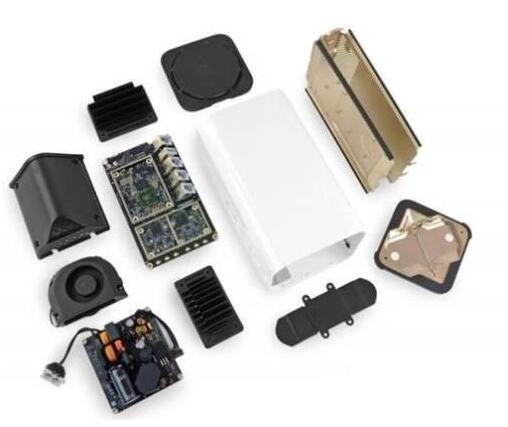
802.11ac will become faster and faster. As we mentioned earlier, the theoretical maximum of 802.11ac can reach 7Gbps. Although it will not really reach the theoretical maximum in real life and applications, if the download speed is increased to 2Gbps in the next few years, you should never be surprised that the download speed of 256mb/sec will become very mainstream.
Nowadays, more and more hardware device manufacturers are looking for products that can really play the potential of 802.11ac. Broadcom, Qualcomm, MediaTek, Marvell, and Intel all started preparing for the 802.11ac standard. On the other hand, the IEEE draft specification has gone through several rounds of voting. Greg Ennis of the Wi-Fi Alliance stated that the final IEEE decision is expected to be in early 2014. So, if you see more and more 802.11ac products coming into your eyes from now on in the market, don't doubt that this is the future trend.
Plastic Package Diode.Among the electronic components, a device having two electrodes allows only the current to flow in a single direction, and many uses apply its rectification function. The Varicap Diode is used as an electronic adjustable capacitor. Most of the diodes have a current directionality that we often call the "Rectifying" function. The most common function of a diode is to allow only current to pass in a single direction (referred to as forward bias) and block in the reverse direction (referred to as reverse bias). Therefore, the diode can be thought of as an electronic version of the check valve.
Plastic Package Diode,High Frequency Diode,High Voltage Avalanche Diode,Plastic Package Zener Diode
YANGZHOU POSITIONING TECH CO., LTD. , https://www.pst-thyristor.com